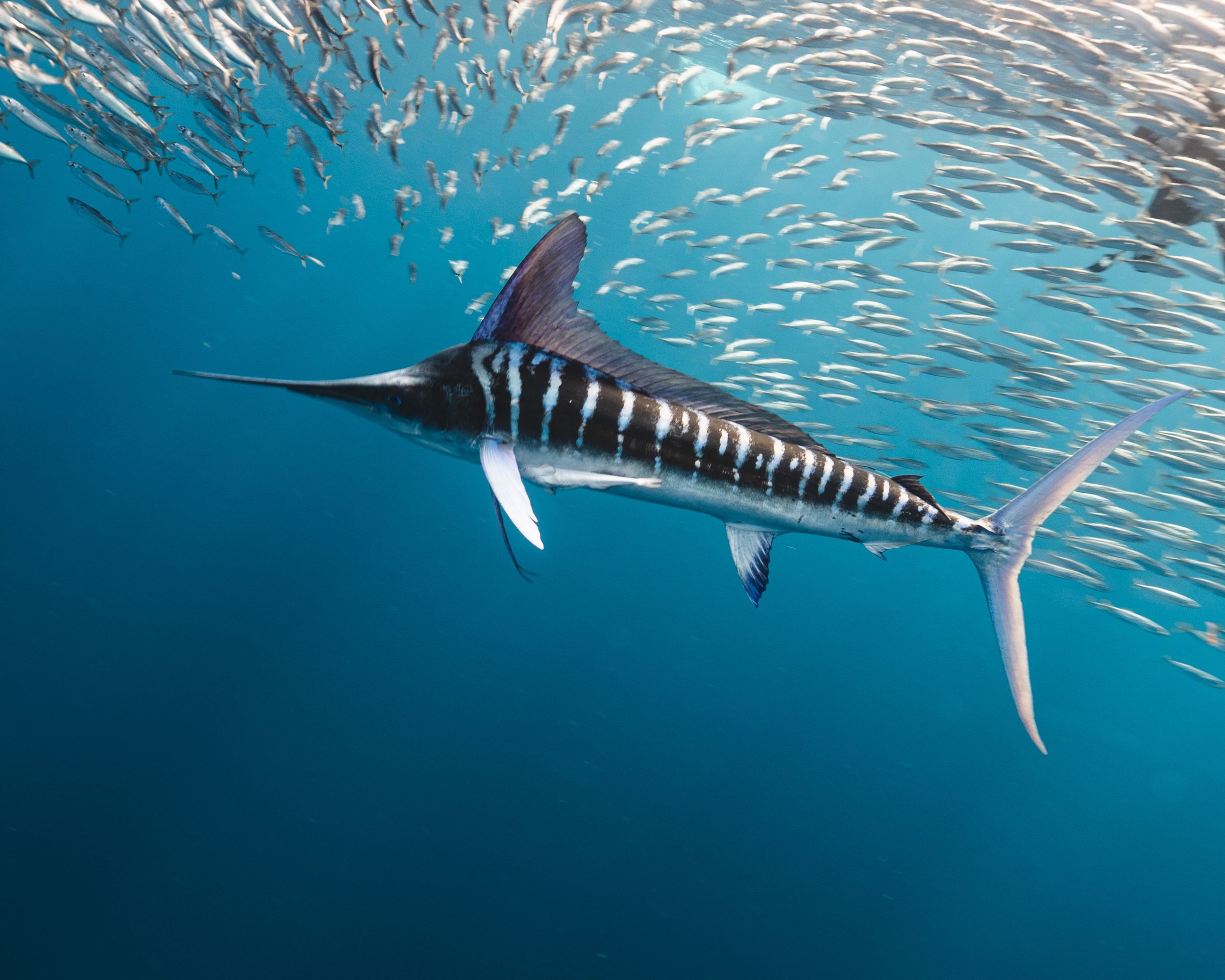Latest News
New Study Reveals the Diving Behavior of Black and Striped Marlin
The two marlin species have differences in their diving behavior, which allow them to both be successful, even when sharing the same habitat.
New Study Shows Komodo National Park Holds Some Of The Largest Aggregations Of Manta Rays
The area may hold the key to regional recovery of the threatened species.
MMF and Partners Create First-Ever Accurate Digital 3D Manta Ray Model
MMF's research team used drones, aerial surveys, and in-water photography and videography to collect measurements and track individuals for the 3D model
Researchers Document the Rare Ornate Eagle Ray—One of the World’s Most Elusive Ray Species
“The moment I saw it, I knew it was something special and unusual.”
New Study Highlights the Need for Long-Term Population Monitoring of the World’s Largest Fish
Additional modeling of the abundance trends showed that only dramatic decreases or increases could be confidently detected
Inhambane Seascape in Mozambique Recognized as Mission Blue Hope Spot
Mission Blue has declared the Inhambane Seascape a Hope Spot in recognition of the spatial planning work being done in the area to develop a network of marine protected areas (MPA) in the surrounding waters.
New Study Values Madagascar Whale Shark Tourism at $1.5 Million Amid Calls for Stronger Protections
Calls for sustainable tourism measures to protect whale sharks are overwhelmingly supported by operators and tourists
Researchers Launch First-of-its-Kind Study to Track Critically Endangered Wedgefish
MMF scientists have kickstarted an intensive tagging study designed to better understand movements and habitat use and guide protection of these rare and threatened species
First Study of Zebra Sharks in Africa Reveals New Hotspot in Need of Protection
Scientists use a combination of local knowledge, underwater photography, and research dives to track an endangered shark.
Microplastics and Manta Rays: What’s In the Water?
This new study continues our previous investigations into plastics in manta ray feeding grounds to find out what types of plastics these animals are accidentally ingesting.
Why Do Manta Rays Move Their Cephalic Lobes?
Results suggest that cephalic lobe movements may be important in social communication or sensing of the local environment, as well as being used in feeding.
End of the Line: Oceanic sharks and rays in 50-year decline
A devastating new study documents an alarming decline of oceanic shark and ray populations – 71% over the past 50 years – primarily due to overfishing. The study confirms fears that high levels of decline in pelagic sharks and rays are happening on a worldwide scale.
Please see below for press releases announcing our scientific publications, and how to get in touch with our media team.
-
If you're a journalist working on a story about topics such as marine megafauna, plastic pollution, and ocean conservation, and are in need of expert comments or imagery, please get in touch with our media team who will be happy to help. We have high-resolution images and videos available and can also assist film crews on location.
BACKGROUND
MMF’s vision is a world in which marine life and humans thrive together.We aspire to attain this state by conducting pioneering research that informs practical conservation efforts to protect threatened marine megafauna species.
‘Megafauna’ are large marine species, including sharks, rays, marine mammals, many fishes, and sea turtles. MMF research focuses on manta rays and whale sharks.
-
For press information, images or to set up an interview with an MMF spokesperson, please contact: media@marinemegafauna.org
-
A list of our studies and reports can be found here.












